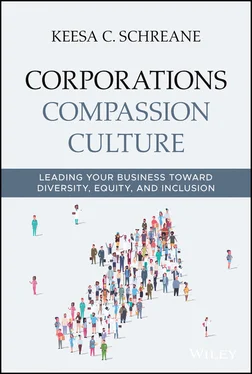1 ...6 7 8 10 11 12 ...17 As Carnegie Steel Company ascended, Carnegie chose Henry Clay Frick as his business partner. Frick was known as a man who got things done and saw the benefits of authoritarian-style management. Carnegie largely favored unions and believed in partnering with workers to avoid breaking strikes and bloodshed, although he felt in some cases they interfered with efficiency and were “elitist” in their membership. Despite their differences in style, neither could have expected the deadly outcome at Homestead Steel Works in Homestead, Pennsylvania, in 1892. 25
In this era, factory work was grueling and poorly paid, spaces were crowded, and tasks were repetitive. Working 12-hour shifts in physically dangerous environments was very common. From faulty equipment to the lack of alertness after the end of long shifts, the loss of a finger or even a life was a real concern. Workers organized to demand a wage that was fair for the extended hours and heightened risk of breadwinners whose families depended on them to put food on the table.
At the time of the Homestead Strike, Carnegie had traveled back to his native Scotland, leaving his company chairman, Frick, in charge. In his written correspondence, Carnegie assured Frick he had his confidence in resolving the situation.
But during negotiations for pay increases, Frick's proposal of a 22% wage decrease escalated into a full-blown strike. Frick brought in a group known as Pinkerton Detectives, a private, armed security force, to disrupt the strike. The armed Pinkertons faced off with striking employees and violent conflict ensued, resulting in the deaths of nine workers and seven Pinkertons. Dozens more were injured, and state militia ultimately intervened to end the standoff.
There are lessons to be learned about actions and reactions during crisis mode. In hindsight, it's easy to talk about de-escalation strategies, pay discussions, and seeing workers as partners. But, when you're in the midst of a heated exchange, and both parties have relevant points and arguments, the way forward may not seem so clear. It is in these seemingly impossible, no-way-out situations that compassionate leaders can aim higher and create solutions that may have a short-term business impact, but a longer-term benefit—a benefit that brings greater commitment from employees and shows how the company seeks to serve employees.
The business world has changed in a thousand ways since Carnegie's day. To take just one example, Carnegie and Frick never had to deal with the 24-hour news cycle, Twitter, or the accelerated rate of social change that we have today. Old-school corporate culture likewise needs to do better in keeping up with the swift pace of the social media dominated landscape. Too many leaders are failing to prepare for how much more swiftly movements progress today than they did in past generations.
Social media pervasiveness; a global consciousness of equality, fairness, and inclusion; and greater financial power enable today's movements to be stronger and last longer. These issues affect the company's reputation and bottom line.
The 2019 Uber wage strikes provided a clear example of these forces in action. In addition to concerns about wages, Uber drivers were also concerned about gender bias, sexual harassment, and allegations of a toxic corporate culture. 26 The May 2019 strikes had a massive impact on Uber's share prices; the company's $45 IPO price had dropped to $25.58 by November. This compounded other investor concerns, such as the viability of its UberEats venture. 27 Then the COVID-19 pandemic hit, and share prices tumbled further, down to $14.82 on March 18, 2020. Uber's stock price held steady in the following weeks of spring and early summer in the $20 to $30 plus range, but they have yet to return to that original IPO high.
In the banking sector, Wells Fargo's leadership appeared to be similarly caught off guard when their corporate culture came under fire in the early 2000s. Employees claimed that nearly impossible sales goals of sometimes up to 20 products a day resulted in a toxic and stressful environment. From 2006 to 2015, the bank's stock rose 67%. But, it turned out that the rise in stock price had been partly due to a number of unethical sales practices, such as the creation of 2 million fake accounts. Ultimately, Wells Fargo eliminated sales goals from its retail side, and the company was faced with a $185 million settlement. 28
During 2016, Wells Fargo stock hit a $45 low, but just as bad was the impact on the bank's reputation—this was especially damaging given the era—post-2008 financial crisis, when big banks were vilified and viewed with skepticism. 29 Their share price continued to struggle over the four-year period after 2016, peaking over $60, but never getting much higher. 30 These examples are cautionary tales. The old corporate culture of putting revenue generation above all else does not always work. This culture is steadily changing. Leaders need to quickly understand how they can balance running a profitable business, while treating employees inclusively, equitably, and compassionately.
Achieving Balance: High-Performing Business and Outstanding Treatment of Employees
Corporations can still build sprawling societies, deliver innovation, empower capital markets, and generate revenues without sacrificing the well-being of employees. Making inclusion and equality foundational components of compassionate business enables us to create, innovate, and increase profits while improving the lives of people inside and outside our corporations.
When leaders are passionate about improving the well-being of their workers, it shows. They deliver pay parity, and commit to an inclusive environment, even during challenging moments.
Leaders are humans and they have their own lenses through which they see the world. The goal in redefining business and leadership is not to make everyone cookie cutter. The goal is not to stifle business growth. The goal is to ensure leaders continue to act decisively and move deliberately with confidence while remaining conscious of the ways in which their cultures, actions, and policies affect everyone in the business landscape, from employees to partners to communities to shareholders.
Carnegie and Frick are considered “mainstream” corporate leaders because they were White men of great economic wealth. They had influence in business circles. Their names were synonymous with success and philanthropy. Their stories of industry are the stories known to the masses, but mainstream stories reflecting successes born from fair treatment of employees exist in a more modern context, too.
Howard Schultz's work to build and evolve Starbucks is considered one of the greatest modern stories of a company that made compassion part of its business model. During his time at the helm, Schultz valued creating a culture of trust and partnership with employees. As he wrote in his 1997 book, Pour Your Heart into It , “There is no more precious commodity than the relationship of trust and confidence a company has with its employees.” 31
In particular, Starbucks is a brand known for taking action on racial injustice in communities. Some may criticize the effectiveness, swiftness, or strategy, but even most critics do credit Starbucks with action. One specific case was an incident in 2018 at a Starbucks in Philadelphia when a manager called police officers on two Black men because they didn't order anything while seated for a few moments waiting on a business partner's arrival. 32
The CEO at the time, Kevin Johnson, was quick to offer an official apology to the men. 33 More broadly, Starbucks made the decision to close 8,000 locations for a one-day racial bias training for employees, which ultimately had 175,000 staff participants. 34 This was a fairly remarkable move for such a large company, even though some employees questioned the ultimate effectiveness of the training. But the fact that Starbucks surrendered roughly $12 million in potential profit as a result of closing down the stores for the training speaks to how strongly they feel about educating employees and improving community relationships. 35
Читать дальше












